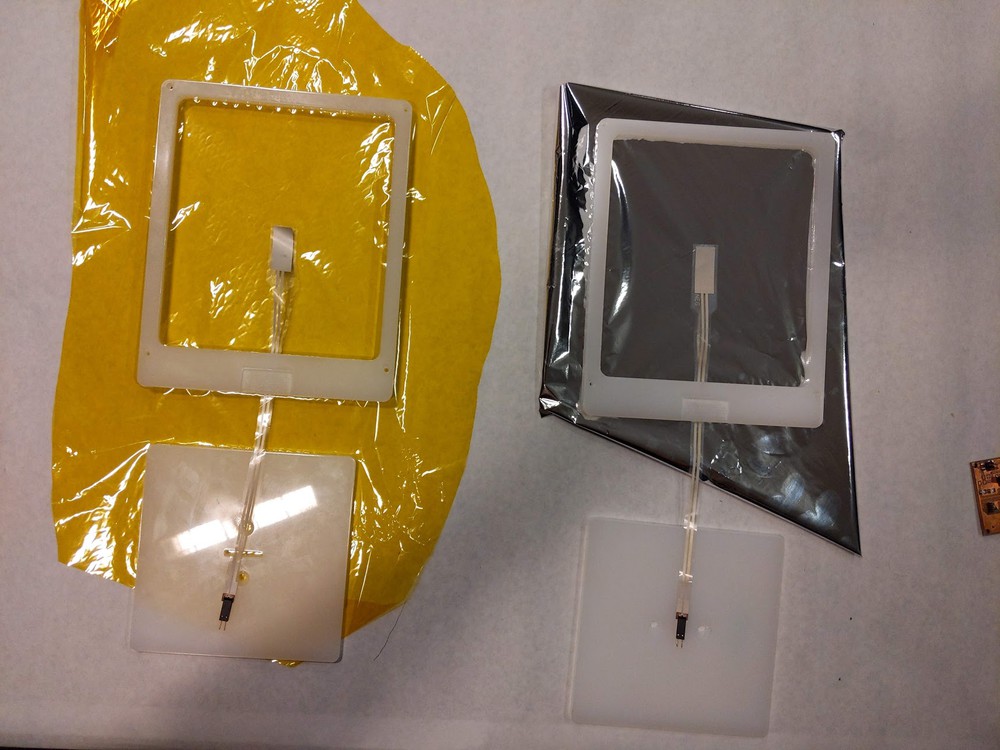Thin Film Microphone
Sensor Fabrication
Sensor Production Approach Rev1
My first attempt was to try and screen print my own piezo sensor using a PVDF-TrFe copolymer. The co-polymer can be acquired as an ink from Arkema for about 500$ 100mL (yes, quite expensive). Two colleagues from the MediaLab were also interested in the method so we teamed up for the printing.
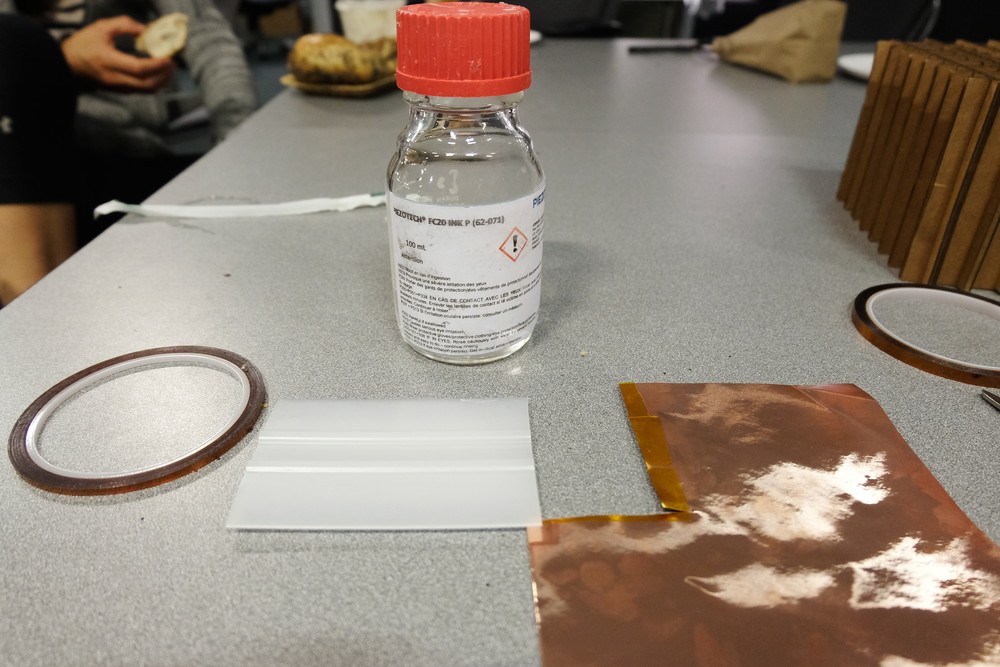
The ink SDS didn't show any hazards but as extra care we decided to do the process in a ventilated space (with extractors) and using gloves and protective masks.
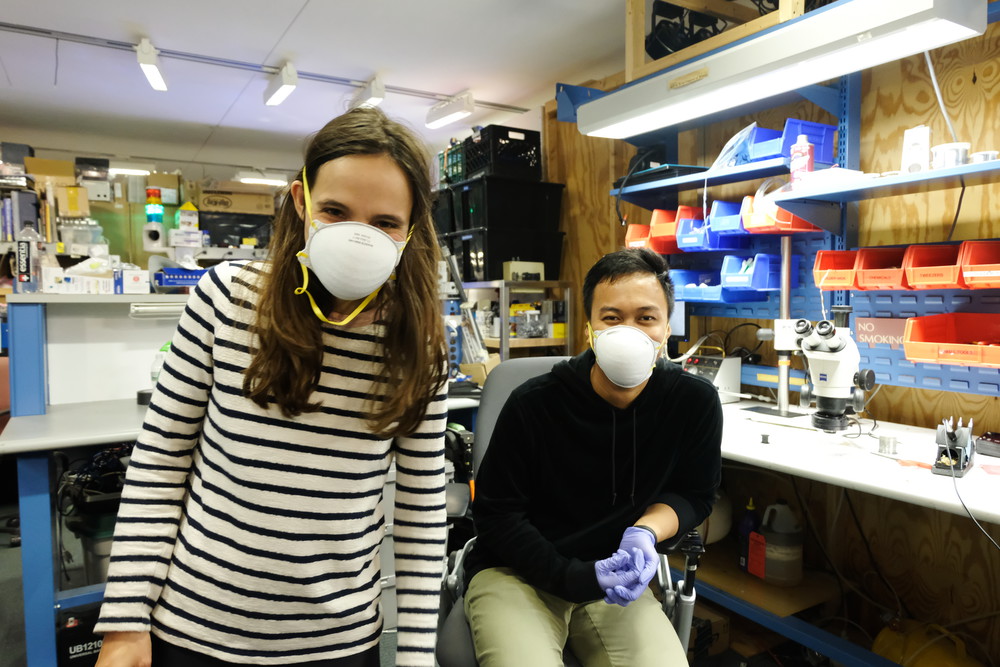
We decided to deposit the ink in pyralux with a copper surface as the bottom electrode. Our mask was very simple just using kapton tape 100um thick as a mask. Using a wooden stick we screen printed the ink on top of the pyralux. Based on the manufacturers instructions the ink cures at 150C. So we used a hotplate as our base for attaching the pyralux and screen printing.
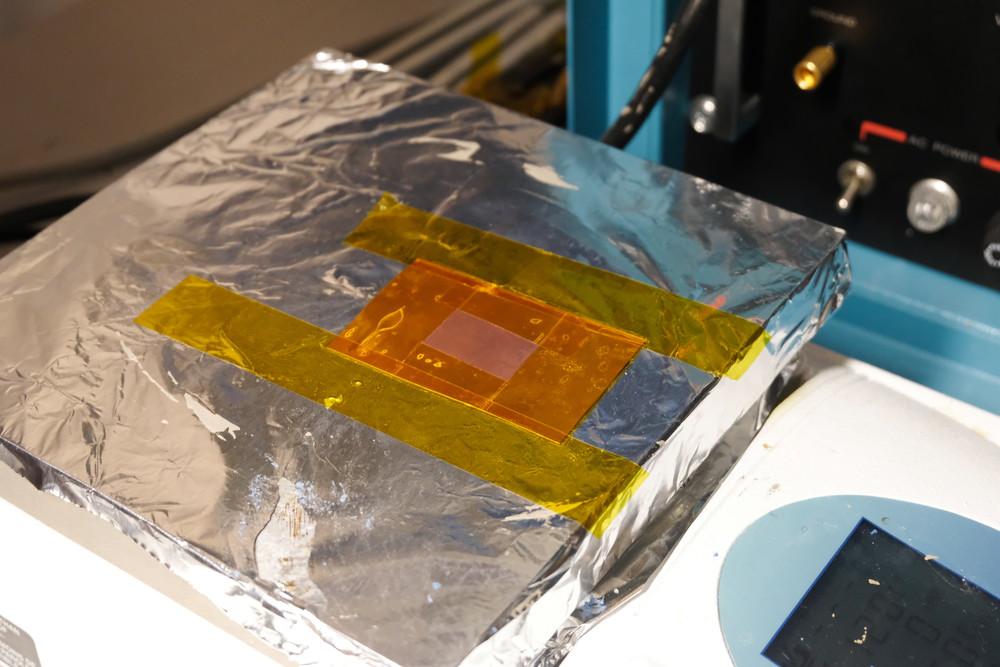
We deposited one layer to make two sensors. One we used two layers of kapton tape as the mask adding so final sensors were 160uM and 320uM thick. In the image below you can see both surfaces coated with the Arkema ink. As the ink is transparent you can't really see it on top of the surface of the pyralux.

After the printing process is the crucial step of polling the piezoelectric material to align the dipoles in a β phase. We perform that by attahcing a DC power supply on top and bottom electrodes and applying a high electric field to the material.
The minimum coercive field strength for PVDF is around 50 kV/mm. Peak performance is usually achieved around 100 kV/mm. So we multiply the minimum coercive field of 50 kV/mm by the thickness of the given sample. So for instance 100 micron thickness requires 5 kV applied voltage.
Poling is not a very simple process as there many ways to do it (using a very low frequency AC signal to drive the voltage, use a Corona poling method instead of contact polling).
Our top voltage that we could achieve was 300V which is way below our target, but when getting to that voltage we started drawing current (showiung that the sample has shorted).
At this stage I can't say the first test was a success but there are many variables I want to work with to try and print.
Sensor Production Approach Rev2
Given the limited success of printing and poling the sensor I decided to experiment with other types of piezoelectric sensors that can more easily embedded into paper and still guarantee succcess. My current candidate is to laminate LDT Piezoelectric sensor on paper. Adding this sensor to the paper would make it easier to integrate and is a good backup in case the piezoelectric printing doesn't work.
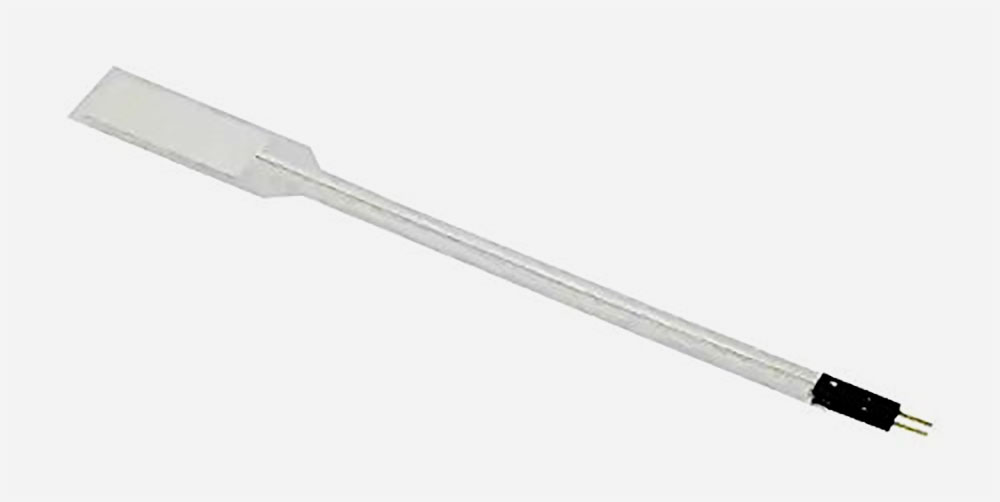
I attacched the sensor into thin film (mylar and kapton) by laminating it into the surface of the film with double sided tape. For the kapton I also laminated a layer of copper as shielding to help with RF interference.
Here are the images of the sensor been embedded in thin film sheet.
